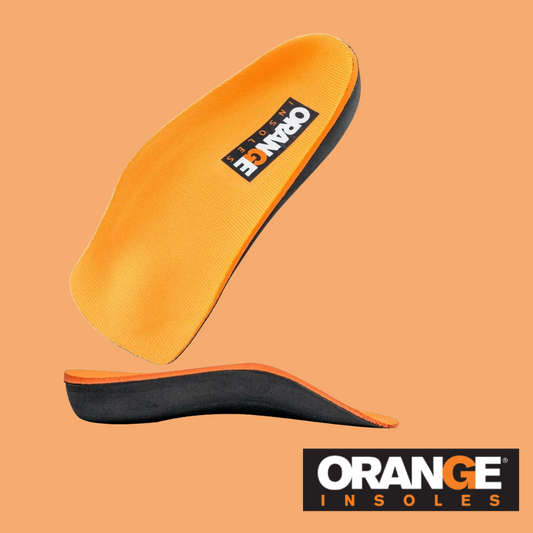For anyone who spends long hours behind the wheel, foot pain can become an unwelcome passenger especially since we rely on our feet to drive! Whether you’re driving for a road trip, daily commute or as a profession, aching feet can turn an otherwise manageable task into a painful experience. So why do your feet hurt and what can you do about it? It’s important to understand the cause first so you can see what remedies are available to solve the problem.
Why Does Driving Cause Foot Pain?
Foot pain from driving often results from the posture and repetitive motion of keeping your foot on the gas pedal. Unlike walking, driving involves keeping your foot in a relatively fixed position, which can cause strain, especially on long drives. Here are a few key reasons for driving-related foot pain:
- Prolonged Tension: Holding your foot steady on the pedal can lead to muscle fatigue and tension, particularly in the arch and heel areas.
- Limited Movement: The lack of movement while driving reduces circulation in the feet, causing stiffness and discomfort over time.
- Poor Footwear: Wearing shoes without proper support, like flip-flops or unsupportive flats, exacerbates the lack of arch support, making foot pain more likely. (We recommend wearing proper shoes when driving)
If driving discomfort is becoming a regular issue, it’s important to address it before it develops into a long-term problem. Foot pain may be more than just a reaction to prolonged driving; it could be a sign of underlying issues that are linked to poor arch support.
For more on these underlying causes of foot pain, check out our article on Common Causes of Foot Pain and How to Alleviate Discomfort.
Common Foot Conditions That May Contribute to Driving Pain
Driving pain can be a symptom of underlying foot conditions. Here are some common issues that might be behind your discomfort:
- Plantar Fasciitis: This condition involves inflammation of the plantar fascia, the ligament that supports the arch of your foot. Prolonged driving can worsen this condition, leading to pain in the heel and arch.
- Flat Feet or Low Arches: If you have flat feet, your arches may collapse under prolonged strain, causing discomfort across the bottom of the foot.
- Overpronation: Overpronation, or excessive rolling of the foot inward, often puts pressure on the arches, heels, and ankles. Poorly supported shoes or prolonged driving can worsen this.
- Metatarsalgia: Pain in the ball of the foot, often due to repeated pressure or poor support, can also make driving uncomfortable.
How to Relieve Foot Pain from Driving
If foot pain is making your time on the road uncomfortable, there are steps you can take to relieve it. Here are some tips for making driving less painful:
-
Choose Supportive Footwear
Opt for shoes with good arch support and a snug fit. Avoid shoes that are too loose or lack structure, like flip-flops. Well-supported shoes help prevent the foot from straining while you drive. -
Add Insoles for Extra Support
Insoles can make a huge difference by providing added arch support and cushioning. If you find yourself in need of better support during long drives, adding insoles can prevent strain and keep your feet comfortable. For long-lasting comfort, look for insoles that offer structured arch support and heel cushioning. For more on finding the right insoles for foot pain relief, see our article on Work Boots, Insoles, and Relieving Pain. -
Adjust Your Driving Posture
Proper posture can help reduce pressure on your feet. Adjust your seat to ensure your legs are at a comfortable angle, and avoid gripping the steering wheel or tensing your legs, as this can increase strain on your feet. -
Take Breaks During Long Drives
For extended road trips, take regular breaks to stretch your legs and feet. Flexing your ankles, stretching your toes, and walking around can help reduce stiffness and keep your muscles relaxed. -
Stretch and Strengthen
Stretching your calves, ankles, and toes regularly can help relieve tension and improve flexibility. Strengthening exercises like toe curls and heel raises also help prevent strain and can alleviate driving-related discomfort.

Preventing Foot Pain for Future Drives
Preventing foot pain starts with understanding your feet and giving them the support they need. Here are some prevention tips:
-
Use Insoles as Preventive Support
Even if you aren’t currently experiencing foot pain, adding insoles to your shoes can support your feet and prevent issues from arising. This is especially important if you spend long hours on the road. -
Stay Aware of Discomfort Early On
Recognize signs of discomfort before they turn into pain. If you feel tension or strain starting to develop, address it promptly with supportive shoes or insoles, and adjust your driving habits as needed.
Drive Pain-Free
Driving foot pain can range from mildly annoying to deeply uncomfortable, but with the right footwear, support, and posture, you can make it a thing of the past. Supporting your feet with quality insoles, adjusting your posture, and taking regular breaks can help you stay comfortable on the road and keep your feet healthy. For insoles designed to provide arch support and reduce foot pain, explore our selection and make every drive a comfortable one.
SHOP for INSOLES
























































